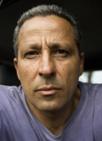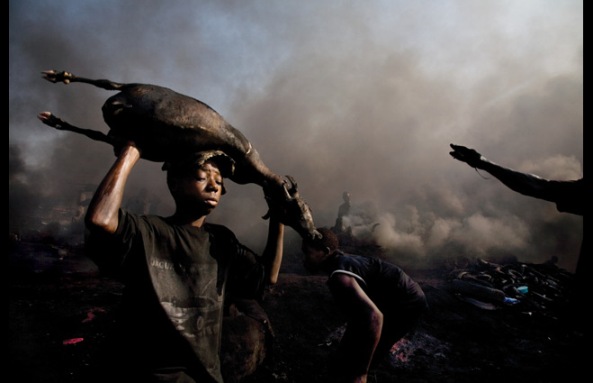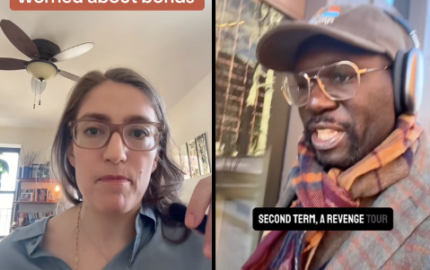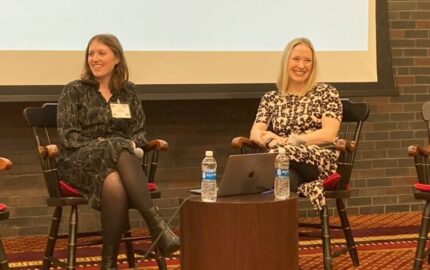 Excerpts from an August 2009 interview with Ed Kashi about his photo series on Trans Amadi Slaughter, an abattoir on the Niger Delta [click "Niger Delta Slaughter" under “Photo Essays” to see the project]:
Excerpts from an August 2009 interview with Ed Kashi about his photo series on Trans Amadi Slaughter, an abattoir on the Niger Delta [click "Niger Delta Slaughter" under “Photo Essays” to see the project]:Q: How did you find out about Trans Amadi Slaughter?
A: I heard of it in the context of working on a larger Niger Delta project. My local fixers said, “You need to check out the Trans Amadi Slaughterhouse.” We went and immediately were rebuffed at the perimeter of this killing zone. It was a small community where the animals are slaughtered and smoked.
Once I saw it, I knew we had to get access. From any part of Port Harcourt, which has about 4 million people, you can see the plume of smoke in the morning. At first you think there’s a terrible fire—in Iraq you would think it was a bombing. It’s coming from burning tires.
I had to work three more weeks to get access. We tried to use local, legitimate channels. But in the end, it was a local friend of the fixer who figured out who was the guy you had to pay off. One of the disturbing things about working in the Delta is that you have to pay “tips”—or whatever you want to call them—to get work done.
It goes against the grain of my ethos of journalism, but there are a few places in the world—and Nigeria is one of them—where you won’t get access without it. It’s just $5 or $10. But it’s the concept. It’s connected with 300 years in which outsiders first came and took slaves, then palm oil, and now petroleum. Nigerians aren’t stupid. They say, “Fine. If we have something of value, you have to pay for it.”
Q: How long did you spend in Nigeria? At the abattoir?
A: Altogether I spent about four months in the Niger Delta over a three-year period. I went to the abattoir twice—well, three times, including the time I didn’t get across the perimeter—for a total of probably four or five hours. The reality is that you can’t spend too much time there. People are angry. Their first reaction is “Don’t take my photo.” There’s a strong level of paranoia.
Often I can break through it, through persuasiveness, but there are also times it’s impenetrable, and I can’t convince people. So even if you get access, you can’t dwell there.
Q: Did you know any of the subjects you photographed?
A: No, I didn’t know them at all.
Q: Did you feel that lack of a human connection with the abattoir workers?
A: Yes. This is one of the fascinating things of doing still photography as opposed to video. I can have a 20 second glancing encounter with you and make a picture that looks like I glimpsed the depth of your soul. And I could also spend days with you but might never capture that.
It’s part of the magic, the serendipity of still photography. You can raise a camera in the right place at the right time with the right commensurate level of perception, and you capture a moment that feels universal or penetrating or intimate.
In the Niger Delta and at Trans Amadi, I felt like that happened quite often. You can’t revisit subjects the way you might like to. You have to work fast, work intuitively.
Q: You have one photo of the workers smiling, which is so different than the other pictures that it’s startling.
A: That guy on the left—it bugs the hell out of me that he’s smiling. I want to get the picture that has power and impacts viewers so they’ll be pushed to think, and hopefully act as well.
I was telling them to stop, and I was shooting a portrait. They were right in my face, wanting to see what’s going on. I would have preferred that none of them were smiling. What happens so often is that we’re in that situation, and we’re looking at it through our values. We think it’s horrible, but this is what they’re used to.
I’ve learned that I have to be careful about applying my prejudice or my filter onto any situation. I want to make pictures that go beyond being a Westerner from the rich world or making pictures that are horrific. I feel that we’ve reached a point in the media where we have to figure out a way to advocate for change and show solutions in the midst of the most horrible stuff.
There’s a woman in New York who responded to the image of the boy with the goat on his head. She sent him money through her church and now he’s enrolled in school. He’s not working there anymore.
If all we do is look at the worst stuff and use our creative abilities to make it look the worst it can look, we’re going to lose our readers. If it’s too extreme, and we just make them numb to it, they won’t be able to relate. I’m always looking to make images and tell stories that bear witness to the most dramatic as well as showing other aspects of the story. I’m not saying I’ve done that with these images. This is more of an indictment, showing something that should be completely unacceptable. But even in this interconnected world, how do these images that seem to have an impact in the west, how do they get back to the source to make a difference?
Q: So you want to be an advocate?
A: Yes, totally, I’ve come to the point where having my pictures appear in The New York Times, National Geographic—it’s a beginning, not an end. Earlier in my life, it was the end. Not anymore. That’s inadequate.
It’s still important to get my work in these publications, but there’s this absolute thrill when I know that a high school or college class or Oxfam is recognizing value in this work and can take it beyond media use. They’ll use it to create change. I can’t do all that myself. I can’t wear all those hats.

Q: Do you see what you do as storytelling?
A: Totally. Yes. It’s what I do. The magic of documentary photography or photo reportage is this combination of powerful imagery and text. Whether it’s minimal or expansive, the words contextualize the images and give a deeper understanding of them.
Folks like me used to have humble aspirations of a book and an exhibition. Now that’s not enough. I feel that’s not enough. We have to have some multimedia to go along with the print stuff and a Web site. I’m trying to develop a Wiki kind of a Web site, where you create a feedback loop. So maybe for these pictures, there will be a school group in Port Harcourt who knows people in the series and can comment on the pictures. So that I’m not the lone interloper. Hopefully I’ve done a good job of getting the ball going, but there you’ll have the subjects themselves contribute to develop the materials more broadly, more accurately.
Q: At the Digest, we’ve talked about whether a series of photos needs to work the same way as a print story: a character, a conflict, rising tension, climax, resolution. Do you think a photo montage or a slide show functions by the same rules? Or does it have a different narrative structure?
A: I think it can go both ways. The beauty or the exciting aspect of multimedia is that we can try new things. It seems like some proponents are saying there’s only one way to tell a narrative: the beginning, the middle, transformation, and the end. There’s nothing wrong with classic modes of storytelling. They’re effective, and they’ll continue to be effective. There’s a reason they work.
One of the things that’s exciting about multimedia is that you can actually introduce the subject’s voice. So that I’m further taken out of being the lone interpreter of my subjects. But do we have to start every story with “Hi, I’m Ed Kashi”? It seems like in every piece the subject introduces himself. How do we get around that stuff? How do we play with these structures, yet still keep them true to some kind of narrative, as opposed to getting completely conceptual?
It’s an interesting debate. It’s even a conundrum. Like Cartier-Bresson—he didn’t even want to be a photojournalist. I try to avoid labels, but I also try to realize that there are real constructions out there, used by arbiters of taste and assignment editors.
There are a lot of people who aren’t really interested in multimedia. They’re just happy with the ways things have been. It’s a very confused time in terms of figuring out which way things will go and what will be effective. I believe in letting the subject dictate the issues and then figuring out the best way to depict that. Maybe it’s working with the subject’s voice, but then maybe there are different languages involved—the structure and the process of even trying to acquire the raw data, and then reconfiguring it.
There is no formula, but we're always butting up against old habits as we approach a new piece. Have you ever felt this way? You find a pair of shoes or a pair of pants, they’re not fancy, but they’re just perfect. Then they don’t make them anymore. You wish you’d bought 10. That aspect of human nature is probably more widespread than we think.
So sometimes tried and true ways of telling stories are perfect. And if it isn’t broke, we don’t need to fix it. If you can reach people using ways we have, that’s great. But there’s no question that there’s a drive in our culture to find new ways to tell stories.
I look at the magazine format now. And I’ve devoted my life to magazines—25 years, my whole adult life. I look at them now, and visually, I think… [he sighs]. Other than Geographic, there are issues.
What are you going to get? A couple pages of pictures. How much can that accomplish? Even in The New York Times, they publish four or six pages. That’s it. When online, you can have almost unlimited real estate to develop the idea, a horizontal and vertical hierarchy of information.
Q: Through your projects with your wife, Julie Winokur, and Talking Eyes Media, you have been involved in books and filmmaking. You did a video, “The Sandwich Generation,” about moving your kids and business from San Francisco to New Jersey to take care of your father-in-law. Can you speak a little about how that kind of project is different than the Niger Delta series?
A: The answer to that question comes from the aging process project, where we spent about seven years in the field. We received a large amount of grant money, and we disengaged from the media. We realized on so many levels it would be more productive to create a nonprofit. That’s where Talking Eyes Media came in—when we decided to go for nonprofit status. We designed a multimedia platform to create books, movies, Web sites, and exhibitions and to do stories about issues the general media would not touch or adequately cover. So basically we wouldn’t have to rely on mainstream media to get funding or support.
Up 'til now the majority of projects have been domestic social issues. In the last couple years, we’ve done a piece on the Niger Delta and a piece on India’s development of a new highway system. And Talking Eyes Media will be cutting the film I just shot in the Niger Delta. But primarily, we’ve been doing healthcare and the crisis of the uninsured.
It’s been amazing. What we’ve found is that if we can get foundations and organizations to help fund us, then once we produce the material, we can sell it to the media or sometimes give it away, depending on the usage and the purpose. It’s difficult, but I can’t imagine any alternative at this point.
 We talked with photojournalist Ed Kashi about visual storytelling, advocacy journalism, and his photo series on Trans Amadi Slaughter, an abattoir on the Niger Delta.
Q: At the Digest, we’ve talked about whether a series of photos needs to work the same way as a print story: a character, a conflict, rising tension, climax, resolution. Do you think a photo montage or a slide show functions by the same rules? Or does it have a different narrative structure?
A: I think it can go both ways. The beauty or the exciting aspect of multimedia is that we can try new things. It seems like some proponents are saying there’s only one way to tell a narrative: the beginning, the middle, transformation, and the end. There’s nothing wrong with classic modes of storytelling. They’re effective, and they’ll continue to be effective. There’s a reason they work.
We talked with photojournalist Ed Kashi about visual storytelling, advocacy journalism, and his photo series on Trans Amadi Slaughter, an abattoir on the Niger Delta.
Q: At the Digest, we’ve talked about whether a series of photos needs to work the same way as a print story: a character, a conflict, rising tension, climax, resolution. Do you think a photo montage or a slide show functions by the same rules? Or does it have a different narrative structure?
A: I think it can go both ways. The beauty or the exciting aspect of multimedia is that we can try new things. It seems like some proponents are saying there’s only one way to tell a narrative: the beginning, the middle, transformation, and the end. There’s nothing wrong with classic modes of storytelling. They’re effective, and they’ll continue to be effective. There’s a reason they work.


